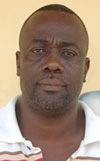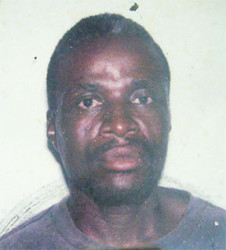Businessman Charles Henry will likely learn his fate on Wednesday when Justice Franklyn Holder sums up the Caracas murder trial to the jury at the Berbice Assizes.
Lead defence attorney, Nigel Hughes closed the case for the defence on Friday after its final witness Rohit Sugrim, who was part of a team demolishing a house, testified of fleeing from the scene and going to Georgetown where he stayed for a year as he was afraid following the incident.
Henry is accused of murdering Errol Lindo.
Responding to questions by State Prosecutor Natasha Backer, the witness said he did not know if his story would have helped Henry, also known as Bristol, as he had never given evidence in any Court in relation to the matter which he had witnessed on April 16, 2014.
He said too that a statement was never given to the police, neither did he make a report at any station, although he knew the station in New Amsterdam.

Earlier, the witness told Hughes that on the day of the incident, he was contacted by Martin, the contractor, to break an abandoned house. But the place was infested with marabuntas and they used soap water to destroy the nest.
Sugrim recalled the house being a two-bedroom building measuring 16 ft x 20 ft. The house contained some old clothes, a barrel and two pots. It was while he was demolishing the back bedroom, he said, that a lady approached, armed with a cutlass, and was broadsiding the flooring whilst using indecent language. At that time, the walls had already been removed, leaving the upright post.

“Martin called Mr. Bristol, who was seated in a car. Mr. Bristol came to the building. He came to the step. The woman was standing on the landing. Mr. Bristol and the woman had an argument. Less than fifteen minutes later, a man ran into the yard. He had an axe which he picked up by the gate. The man charged towards Mr. Bristol. Mr. Bristol fired a shot. The man still charged and another shot was fired. The man was pursuing Mr. Bristol who fell backwards. Another shot was fired. The man fell on Mr. Bristol, who thereafter pushed the man off, to get up. Mr. Bristol had fall between the fowl pen and a fence”, the witness said.
Afterwards, the witness said, he picked up his bicycle and rode off along the dam, heading in the opposite direction, from where he had ridden earlier.
On arrival at his home, he was informed that persons were threatening to burn his house so he fled to the Capital City, returning to the Vryheid Village every two months.
Another defence witness, attorney Adrian Anamayah, who said he had looked into the land- related issue at Caracas for his client, the accused, said that he had given instructions to the accused to remove the shack after photographs reflected that the building was abandoned .
A lawyer for over fifteen years, the witness recounted that a meeting had been held with squatters in his chambers where they were told that the land was owned by the accused. A court order, an old transport and a probate were shown to them.
Anamayah said Lindo was among those at his chambers and he acknowledged the documents and had agreed to contribute towards the surveying of the land.
“Subsequently, the accused sought advice to secure possession of the property which Mr. Lindo claimed to occupy and I advised him to send a notice of removal.
Sometime after, Mr. Henry sought advice and I recommended that the property be photographed. From the photograph, I discerned that it seemed to be an abandoned shack. Thereafter, I advised Mr. Henry, that since Mr. Lindo could not be located, he could remove the shack”, Anamayah told the court.
The witness said he did not see the accused after that advice was offered.
Under cross-examination by Backer, Anamayah said, he was not present at Caracas on April 16, 2014, and as such could not assist the court with what would have occurred between Henry and Lindo on that date. Responding to the Judge, the witness said a shack is a structure that does not satisfy the threshold of being a house. It’s a raw, hurriedly put together structure.
The case for the prosecution is that Henry fatally shot Lindo on April 16, 2014 during a demolition exercise at Plantation Caracas, West Canje.
Twelve witnesses have testified for the State including Government Forensic pathologist Dr Vivikanand Brijmohan who performed a post-mortem examination on the body of Lindo.
The pathologist had observed that there was an open wound to the left side of his neck, a gunshot wound to his left thigh and a grazing wound to his left chest. The cause of death was recorded as due to unnatural causes as a result of shock and haemorrhage and gunshot injuries.









